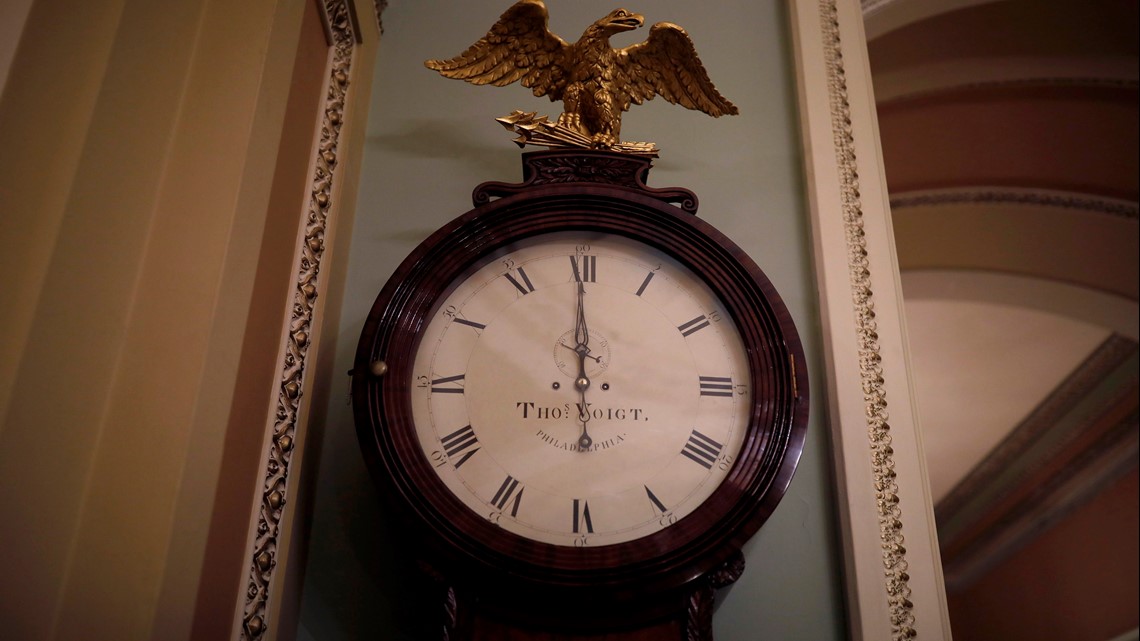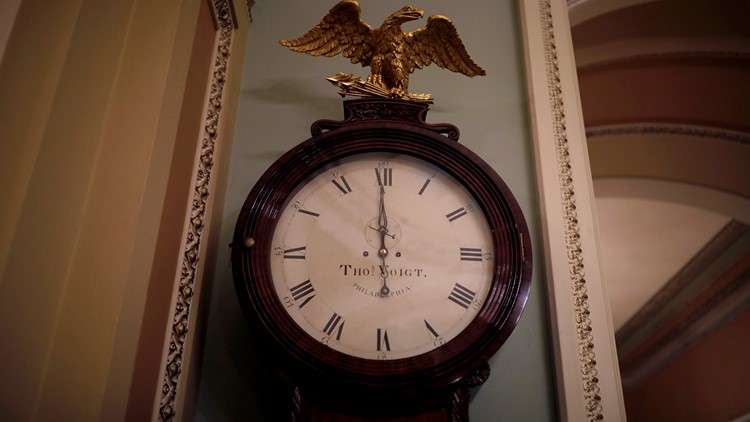Prior to this week's government shutdown, the government has been shut down in part of fully 18 times as a result of budgetary disputes between Congress and the White House.
The government shutdown as an event is a relatively modern phenomenon, only coming into use in the Ford Administration.
A 10-day partial shutdown in 1976 due to funding problems tied to the departments of Labor and Health, Education & Welfare (now separated into the Education and Health & Human Services cabinet-level departments), was eventually resolved when a continuing resolution was signed by President Ford.
Most of the shutdowns have lasted anywhere from one to three days, but the longest ran for 21 days during the Clinton Administration, between December 5, 1995 and January 6, 1996.
Shutdowns took up more days under President Jimmy Carter than under any other president. Under Carter, the government was shut down for a total of 57 days that the government was shut down at least partially.
In comparison, there were no government shutdowns under George W. Bush's Administration.
Ford
9/30/76-10/11/76 (10 days) - Ford vetoed funding bill for the departments of Labor and Health, Education and Welfare (HEW, which now are the separate departments of Education and Health & Human Services). Congress overrode Ford's veto on Oct. 1, but the partial shutdown did not end until nearly two weeks later when a CR became law.
Carter
9/30/77-10/13/77 (12 days) - The House wanted to continue a ban on abortion using Medicaid funding except in cases where the life of the mother was at risk. The Senate wanted to open this up to allow for abortions in the cases of rape or incest or when the life of the mother was in danger. The funding was tied to departments of Labor and HEW, which led to the shutdown. The ban was eventually continued until the end of October, allowing negotiators time to work out a deal, ending the shutdown.


10/31/77-11/9/77 (8 days) - The prior standoff was not resolved, which led to another shutdown. Another temporary bill was signed by Carter giving more time for Congress to resolve its standoff.
11/30/77-12/9/77 (8 days) - The second temporary measure was not long enough -- the House said a Senate proposal allowing Medicaid to pay for abortions by victims of statutory rape was a non-starter. A new deal was eventually brokered allowing an exception for cases dealing with abortions resulting from rape or incest or which are necessary to protect the mother's health.
9/30/78-10/18/78 (18 days) - Carter vetoed a defense bill which included funding for development of the nuclear-powered Nimitz class aircraft carriers. He also vetoed funding for public works appropriations which he deemed wasteful. A new defense bill which excluded the carrier funding was eventually passed, as was a replacement public works bill which Carter signed, breaking the logjam.
9/30/79-10/12/79 (11 days) - The House wanted to raise congressional pay by 5.5 percent - the Senate opposed the move. The House also wanted to limit federal abortion spending to cases where the mother's life was in danger. This led to a partial shutdown. The shutdown was ended when the House got their pay increases, but had to allow abortion funding in cases of rape or incest.
Reagan
11/20/81-11/23/81 (2 days) - Reagan promised to veto any spending bill that didn't include at least half of his proposed $8.4 billion in domestic budget cuts. The Senate followed through, the House balked, demanding greater defense cuts and pay raises for itself and senior level federal civil servants. Reagan vetoed the measure and shut down the government. As part of this particular shutdown, 241,000 federal employees were furloughed for one day.
A temporary bill was agreed on so that Congress could work out the issues.
9/30/82-10/2/82 (1 day) - This one was for no real reason. The new fiscal year started, and Congress didn't pass their new budget in time so parts of the government were forced to shut down.
12/17/82-12/21/82 (3 days) - The House and Senate wanted to fund public works spending in order to create more jobs. Additionally, the House opposed funding for the MX missile program, which was a major priority of the Reagan Administration. Reagan threatened to veto any spending bill that included jobs money. Eventually, after a short shutdown, Reagan signed the bill.
11/10/83-11/14/83 (3 days) - The House passed a measure adding nearly $1 billion in education spending and cutting foreign aid below what Reagan wanted. Eventually, the House ended up reducing their education spending request to about $100 million, which ended the brief shutdown.
9/30/84-10/3/84 (2 days) - Passage of a House spending bill was tied to a Reagan crime-fighting package which the president wanted, and the Senate's tying it to a civil rights measure which the president opposed. A spending extension was passed which allowed the two sides to continue negotiating.
10/3/84-10-5/84 (1 day) - The three-day extension was not long enough, which forced an additional shutdown. Congress backed down and the civil rights and other measures were stripped from the bill.
10/16/86-10/18/86 (1 day) - This brief shutdown came after disagreements between Reagan and the House over an expansion of Aid to Families with Dependent Children. Democrats in the House eventually backed down on some of their demands, while securing a promise for a vote on their proposed expansion of welfare, while passing a necessary measure to reverse the government shutdown.
12/18/87-12/20/87 (1 day) - Reagan and the House could not come to an agreement over funding for Contra militants in Nicaragua. At the same time, the House wanted to see a return to the FCC's Fairness Doctrine requiring equal time in political disputes, which the FCC had stopped enforcing at the time. The House backed down on the Fairness Doctrine, and a deal was worked out on Contra funding, ending the logjam.
George H.W. Bush
10/5/90-10/9/90 (3 days) - Bush wouldn't sign a continuing resolution without a deficit reduction plan, and vetoed this one that hit his desk. The House could not override the president's veto, resulting in the shutdown. To end it, Congress adopted a joint budget proposal which came up with a plan to reduce the deficit. Bush signed off on it.
Clinton
11/13/95-11/19/95 (5 days) - Congress sent Clinton a continuing resolution which would have raised Medicare premiums and committed the president to balance the budget within seven years. Clinton vetoed it. To end the shutdown, Clinton and Congress agreed to fund the government at a reduced level while negotiations continued. Furloughed workers were given back pay.
12/5/95-1/6/96 (21 days) - GOP Congressional leaders demanded Clinton come up with a seven-year budget plan that used forecasts from the Congressional Budget Office as opposed to the Office of Management and Budget, whose forecasts were more optimistic. Clinton's plan left a $115 billion deficit after seven years according to the CBO as opposed to the OMB's estimate which indicated it would balance the budget by that point, leading to the shutdown. Eventually, Republicans backed away and passed legislation to reopen government.
Obama
10/1/13-10/17/13 (15 days) - The 2013 shutdown was primarily due to a dispute between Congress and the White House over the Affordable Care Act. A continuing resolution was not signed prior to the start of the 2014 fiscal year, resulting in the shutdown. About 800,000 federal employees were furloughed and another 1.3 million were required to work without pay. A continuing resolution was passed by Congress on October 16 and signed by the president shortly after midnight on October 17, ending the shutdown.


